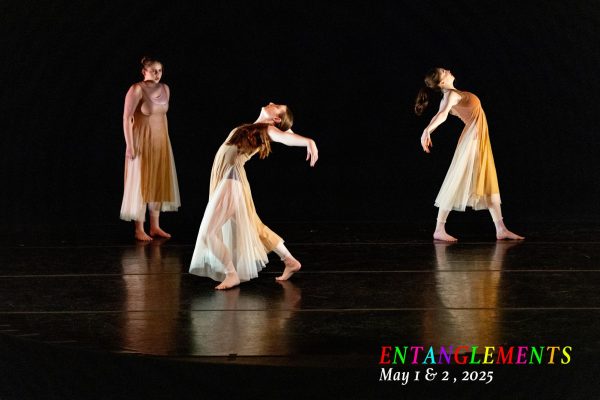Zoom Wins Hearts of Students
April 25, 2020
As remote learning continues to evolve, synchronous meetings have become the core of classes. Even so, teachers have yet to establish a uniform video chat platform. Some teachers use Google Hangouts, others use Microsoft Teams, however, the majority use Zoom. For this reason, Latin is working to set up an educational account with Zoom. Despite various privacy issues with the platform internationally, both students and teachers are adamant that its features remain superior to all other programs.
After testing out various platforms, Mr. Kanai says, “I personally prefer Zoom over Google Hangouts, mainly for the breakout room feature.” The breakout room feature allows teachers to divide students into smaller groups. This gives students the opportunity to do group work, an element of class that has been hard to maintain throughout remote learning. “While it’s not a perfect substitute for paired and small group work, being able to quickly divide the class up into smaller chats is incredibly helpful,” Mr. Kanai says. Aside from the breakout room feature, Mr. Kanai expresses the value in Zoom’s reusable links. He adds, “I also love that I have a kind of designated classroom space that students can access from RomanNet or previous email invitations, instead of having to start a new call every time like with Google Hangouts.” With regards to Zoom’s privacy problems, Mr. Kanai says, “There are ongoing privacy concerns, but it’s my understanding that if you are using the subscription version of Zoom, it’s fairly secure.” He also mentions another key feature of Zoom: the waiting room tool. “I also have the waiting room enabled, so I can control who comes into the space—another feature I don’t have with Google Hangouts,” Mr. Kanai says.
Students seem to share a similar outlook on Zoom. Junior Olivia Frankel says, “I feel like Zoom works best—I think the technology alone is a lot better, it lags less, and gives teachers a lot more opportunities.” She also emphasizes the quality of the platform’s screen sharing. “The presentations teachers give on Zoom work a lot better,” she says. Like Mr. Kanai, Frankel feels the most significant feature of Zoom is the breakout room tool. “Being able to have small discussions like we do during actual school is very helpful,” she adds. As for Zoom’s privacy, Frankel is confident in the platform’s response to its prior issues. “I think that Zoom is now taking appropriate precautions,” she says. Similarly to Mr. Kanai, she highlighted the waiting room tool. “Having the organizer of the meeting approve each person allowed in the Zoom meeting changes everything,” Frankel adds.
“I think Zoom has probably been the easiest for me to use so far,” sophomore Lucy Mitchell says. She too finds Zoom effective and the breakout room tool impressive. “I’ve had less trouble getting connected and it’s cool the way you can break off into smaller groups to do separate work,” she adds. Mitchell also reveals her feelings about the platform’s privacy dilemmas in the past. She says, “I’m really not concerned with any of the privacy issues…I hadn’t heard much about them until just recently.” Mitchell brings up an important point: until the Latin community experiences problems with Zoom’s privacy, it should not affect online learning. Thus, in this time of uncertainty, both students and teachers are relying on personal experience to inform their use of Zoom, rather than issues outside of the school.
From its breakout room feature to its steady connection, Zoom calls closely resemble a typical classroom experience. Although many were skeptical of online learning at first, the platform has given many members of the Latin community a renewed faith in the school’s functionality for the time being. Mr. Kanai says, “I actually think that Zoom is going to be a great solution for the situation we’re in.”



























































Shandor Simon • Apr 27, 2020 at 10:10 am
I’m the Technology Director at Latin and I would like to clarify and comment on a few things:
Regarding Google Hangouts Meet:
1) Meet actually does have a feature similar to Zoom’s waiting room, but it automatically allows in students who are logged in to their lsoc.org account. In default usage, it is actually more secure then Zoom’s default settings.
2) Meet supports reusable links.
Regarding Zoom:
1) Latin already has an educational account with Zoom and did not switch to using Zoom until it was in place. This provides an enhanced privacy policy that protects student information as well as providing enhanced security controls.
2) We have already had several attempts of people trying to crash our Zoom and Meet meetings. Fortunately, the security measures put in place with both platforms prevented classes from being disrupted. Many peer schools are struggling with this issue, including our friends at Lab: https://uhighmidway.com/7339/news/hacked-zoom-call-prompts-investigation-increased-security/
3) Some schools and institutions have banned the use of Zoom. Some have done so because of their privacy policy with the free (non-education) version which allows them to share data with Google and other ad providers. Others have done so because of security concerns about unauthorized access to webcams, poor encryption, routing data through China, security bugs in their software, etc. Zoom has worked hard to update their software to address these issues. Finally, some have banned Zoom in a panicked response to Zoombombing (which can happen on other platforms too). Our delayed rollout of Zoom was based on working through all of these issues.
4) The Breakout room feature is awesome!
Unfortunately, with how quickly all of this has unfolded, my team hasn’t had a chance to communicate as much as I would like. Thank you Nina and the Forum for covering the use of these tools! If anyone has any questions or concerns about tech at Latin, please feel free to reach out to me or the IT team. You can also always email [email protected] for tech support.
adviser • Apr 27, 2020 at 11:51 am
Thank you for this thoughtful clarification, Shandor.